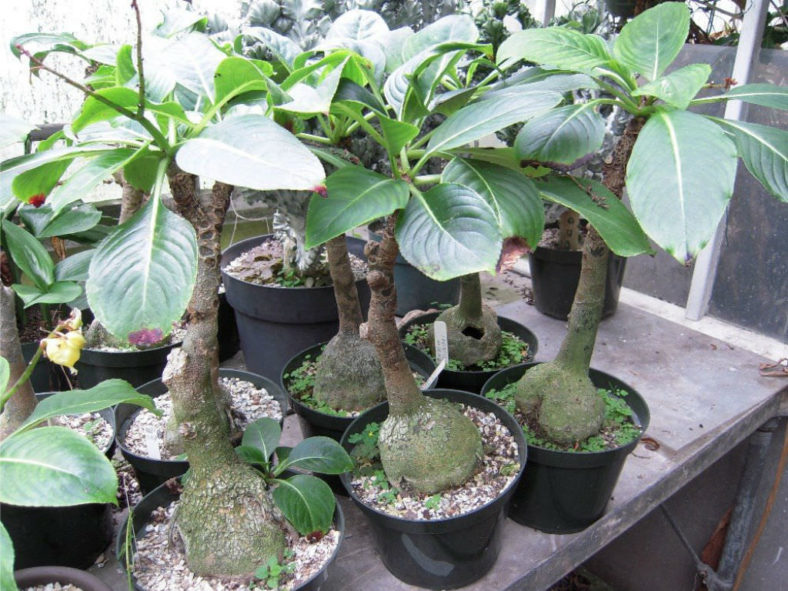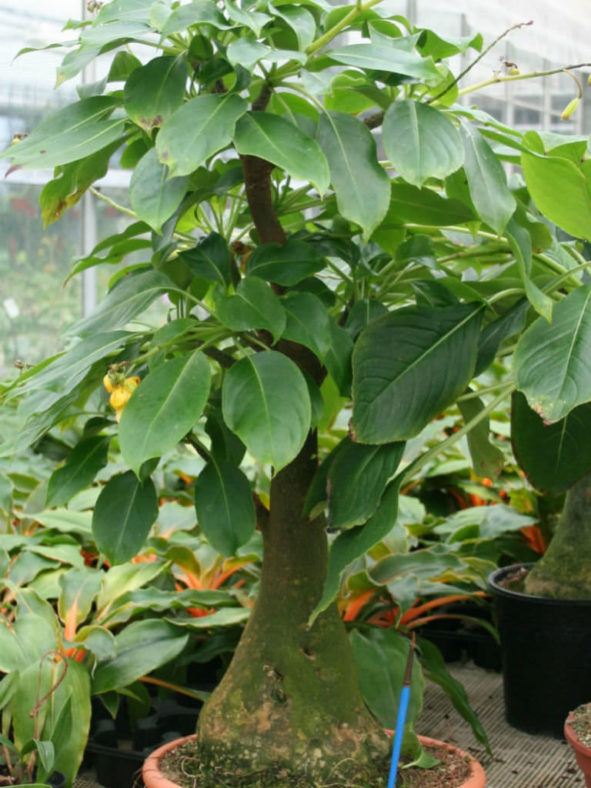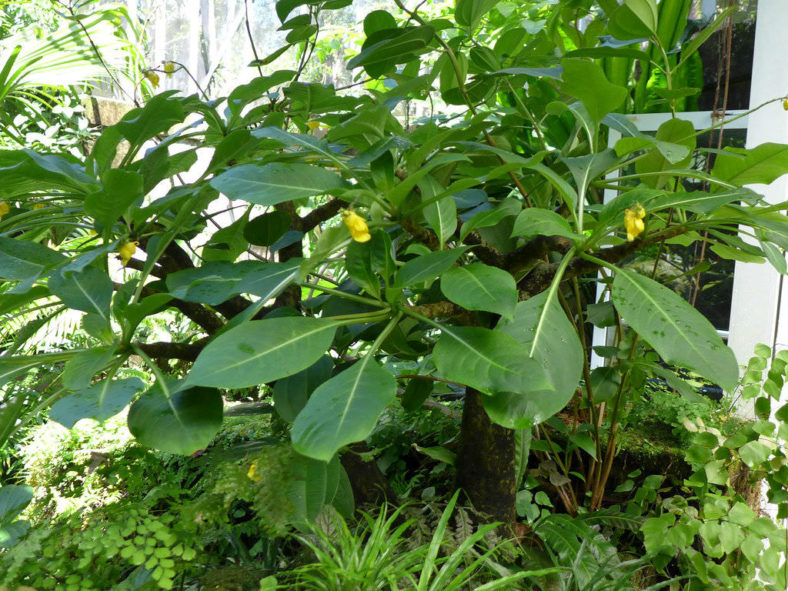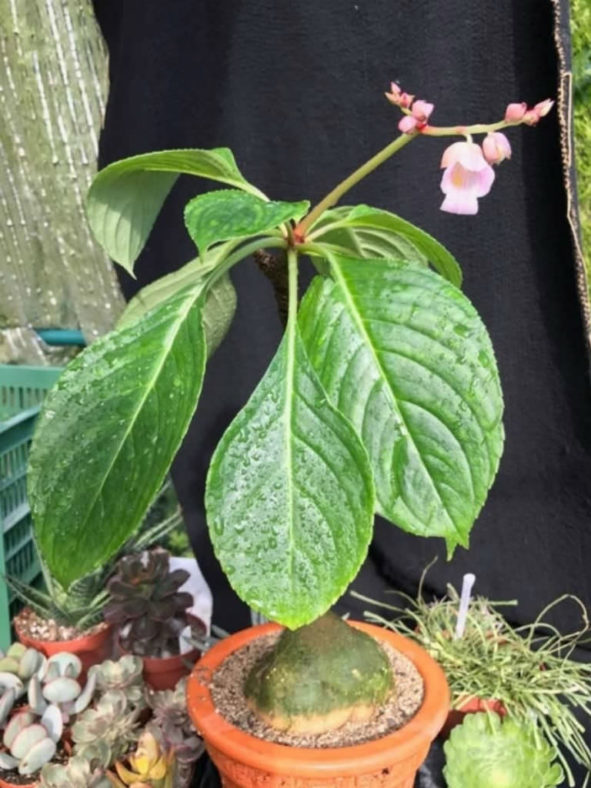Scientific Name
Impatiens mirabilis Hook.f.
Common Name(s)
Giant Impatiens, Giant Balsam, Gouty Balsam
Scientific Classification
Family: Balsaminaceae
Genus: Impatiens
Origin
Impatiens mirabilis is native to Thailand.
Description
Impatiens mirabilis is a semi-succulent plant with a swollen stem base reaching 2 feet (60 cm) in diameter. It can grow up to 10 feet (3 m) tall. The leaves have a thick fleshy midrib and 13 or 14 pairs of faint pinnate nerves. They can measure up to 1 foot (30 cm) long and up to 4.4 inches (11 cm) wide. The plant can drop some or all of its leaves if conditions get too cool or dry, but it can stay evergreen if conditions are right.
The flowers are yellow or pink and appear in summer.

Hardiness
USDA hardiness zones 11a to 11b: from 40 °F (+4.4 °C) to 50 °F (+10 °C).
How to Grow and Care
When they think of Impatiens, most people think of Busy Lizzie, but there are over 1000 species spread around the globe, except for South America and Australia. Giant Impatiens originate from Thailand, where they grow in warm tropical conditions. Most Impatiens can't survive this harsh, rocky environment, but this one does, thanks to its unusual caudex, which stores water and provides stability among the rocks.
Giant Impatiens grow best above 60 °F (15 °C). It seems happiest between about 70 and 90 °F ( (21 and 32 °C). It doesn't need a large pot due to its small root system. But it does require fast-draining soil. It is drought tolerant but grows best if the soil is kept evenly moist. It does well in varying amounts of light, from part sun position to bright shade. However, some protection from the intense afternoon sun may be needed.
Propagation is mainly by seed, but cuttings, although difficult, are also possible. If you want to catch the seed, put something around the seed pod, or they will spring all over the place. The seed can be kept up to 3 months before sowing but can lose viability quickly afterward.
Links
- Back to genus Impatiens
- Succupedia: Browse succulents by Scientific Name, Common Name, Genus, Family, USDA Hardiness Zone, Origin, or cacti by Genus
Photo Gallery
Click on a photo to see a larger version.


